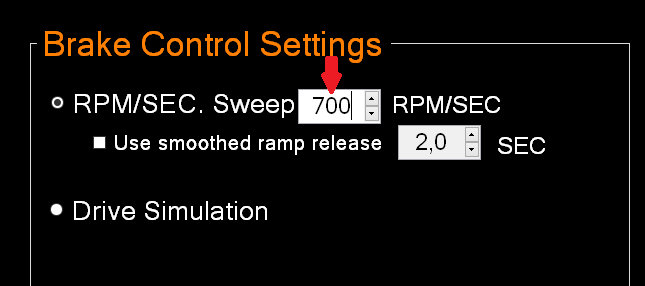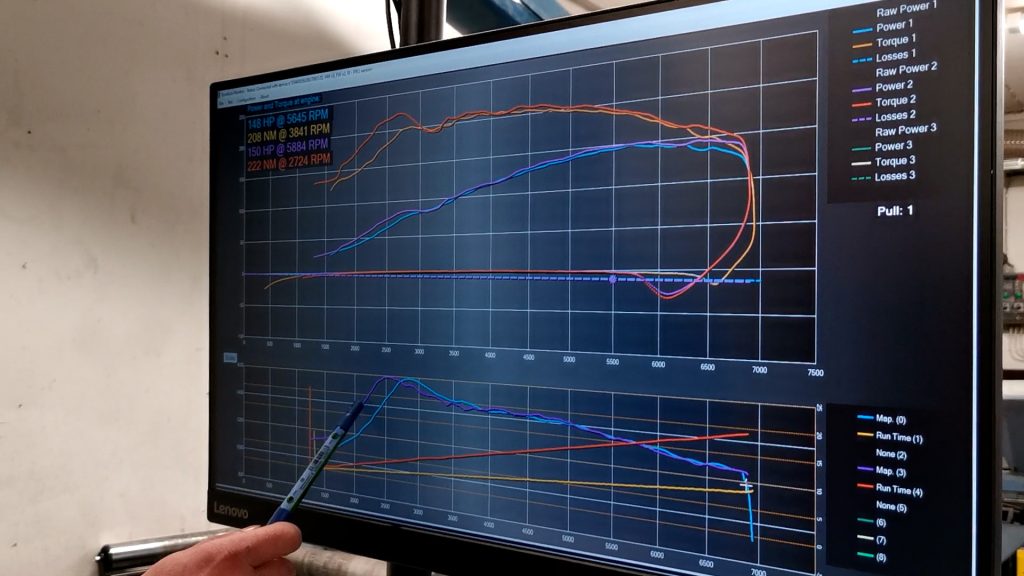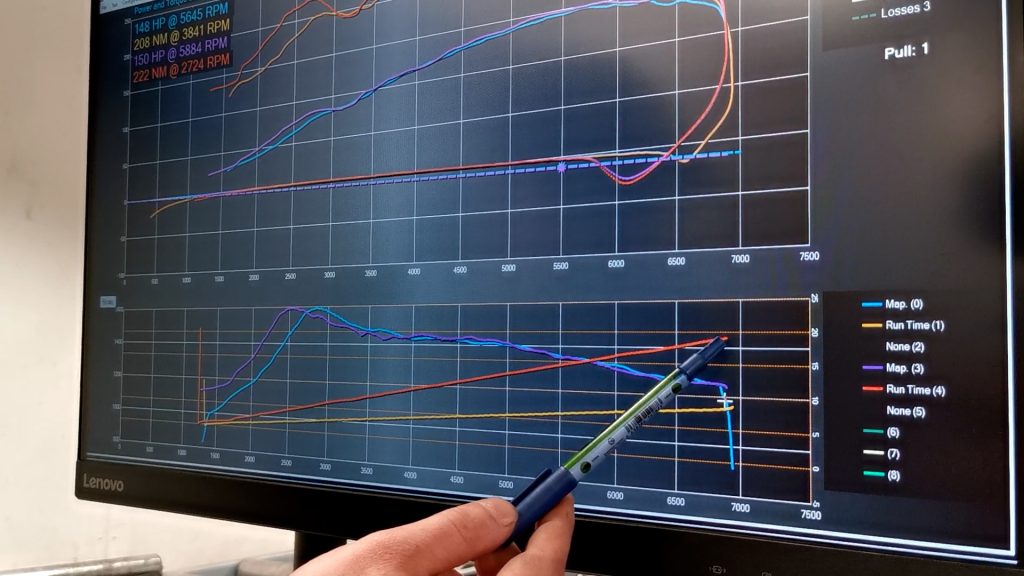Here in this article we will look at the sweep test and how its setup effects on the results.

We have done two pulls here with the same car with a turbocharged engine to show you the difference between ramp speeds 300 RPM and 700 RPM per second.

This curve in this lower graph is the boost (Map, blue and violet curves). We can clearly see that if we use lower ramp rate, there is more load and the turbo spools much earlier, at about 2500 RPM and with a 700 RPM/SEC ramp the boost curve goes up 500 RPM later. So if you use lower ramp rate, it will give more load and the turbo spools harder, but the rest of the pull is basically the same. The only difference is when the turbo starts spooling and with less load, we get less pressure which equals less power and torque (upper graph on the screen).

With the 700 ramp rate, the test takes a little bit under 10 seconds and with 300 it takes almost 20 seconds. (Run Time, yellow and orange curves).
But there is also a risk that if you make too long runs, especially with a small intercooler, you will start heat soaking the intercooler and you will start loosing power on the high RPM because the intake air temperature gets much higher. So what you want to do is to aim to the acceleration speed you see on the road or track. Usually it is around 400-500 RPM/SEC but for some turbo diesels you can use as low as 200 RPM/SEC setting.
